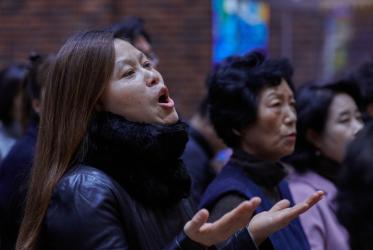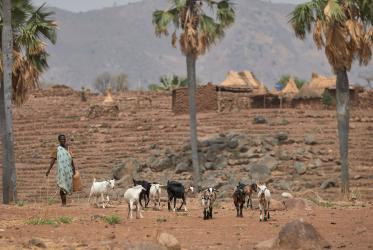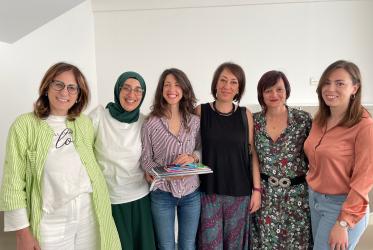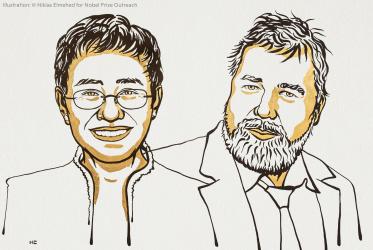In the face of the COVID-19 pandemic, the WCC’s Pilgrimage of Justice and Peace did not grind to a halt. But it did have to change.
“The pandemic slowed down our capacity to capture information from member countries in the physical sense of being there,” reflected Martin, who is also and a member of the WCC Commission for World Mission and Evangelism. “The visit of one human to another is invaluable.”
The group first began organizing its work in 2015.
“Since then, for our annual gatherings, we went on pilgrimages to communities in Israel and Palestine, Nigeria, Colombia, Thailand, and Fiji – in addition sending Pilgrim Team Visits to many more places,” said Enns, who also serves as a member of the WCC central committee. “As a pilgrim, you travel light and you receive with gratitude what the hosting community is providing.”
And when COVID-19 swept the world, pilgrimages had to become virtual. “This second-best approach has been surprisingly helpful,” said Martin. “The accompaniment can hardly be physical except in rare cases.”
The pilgrimage has continued to move along four themes: truth and trauma, land and displacement, gender justice, and racism. “Shortly after our inspiring pilgrim station in the liquid continent of the Pacific in January 2020, we were all confronted with the fact, that travelling became impossible – due to the pandemic restrictions,” said Enns. “For a pilgrim community, being on the road is not simply a means to achieve some goals.”
Yet, Martin said, as the Pilgrimage of Justice and Peace is focusing on North America during 2021, largely in a virtual way, it has been possible to be of one spirit with communities along the way.
“The inequalities of old are still evident in the ethnic stratifications of society,” she said. “COVID-19 has harshly brought into focus the effects of stubborn inequalities.”
It has been illuminating to see what a Pilgrimage of Justice and Peace looks like in a situation of global shutdown—especially as the group is entering the stage of “harvesting” from the entire journey, said Enns.
And yet, “for a pilgrim, unforeseen challenges actually do not come as a surprise,” he said. “In fact, these challenges are reminders of human vulnerability, the impossibility of planning too far ahead, and the dependency on each other – and God’s grace.”
In fact, if a pilgrimage sometimes feels like a painful drudge, it may be more empathetic with communities in pain. “I imagine that some of our sisters’ and brothers’ life journeys would in some regard remind them of the most painful and grueling stations of the cross,” Martin said. “A theology of accompaniment calls to mind a recognition of Christ’s journey to the cross for humanity.”
A Pilgrimage of Justice and Peace challenges us to leave no one behind, said Enns. “Our digital pilgrim visits to communities in North America allowed us to listen to Christian Inuit wisdom in Alaska, to Gwich’in in Arctic Canada, to Black and Indigenous experiences in Minnesota, as well as in Winnipeg and Toronto,” he said. “We have ‘touched’ wounded Mother Nature and cultural dislocation, and we have witnessed the impressive resilience of our ecumenical siblings.”
We stumble along the path together, as one humanity. “The great hope arising from the journey is that there were some along the way who mopped Christ’s brow and helped him to carry the cross when he could no longer do so,” said Martin. “There were those who followed him for the entire journey and those who experienced the joy of the meaning of resurrection.”
Enns wonders: Can we allow the experience of the most vulnerable to take the lead? He believes that answers to this question will be explored at the WCC 11th Assembly in Karlsruhe, Germany in 2022.
“Not only have we learnt anew how broad and wide the ecumenical table needs to be (or the ecumenical mat – in the Pacific), we still have to learn how we become true companions for each other, celebrating our gifts, touching each other’s wounds, and transforming the injustices, together,” he said. “We shall adapt our ecumenical programs to a pilgrim methodology; hosting each other and growing into true companionship with each other.”
Martin said that the harvests of the pilgrimage are drawn from bringing good news to all the corners of the world. “To accompany is to draw alongside with God as our source of strength and we share our hope and gather courage from each other for the onward journey of life,” she said.






